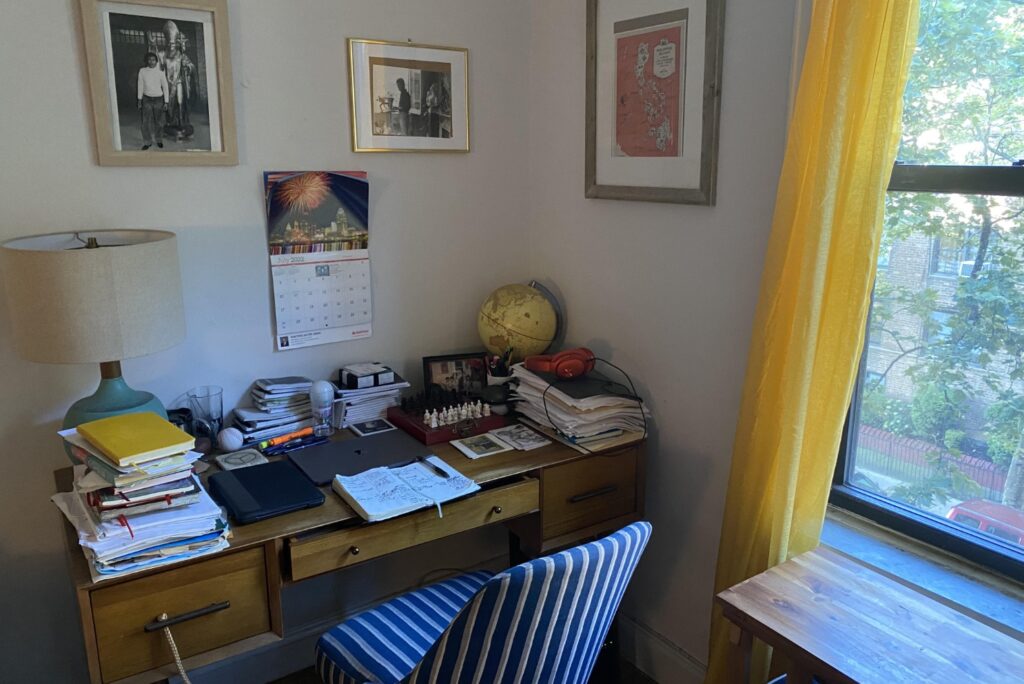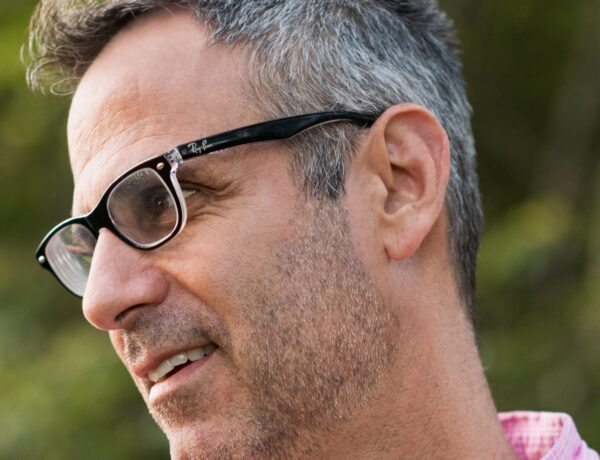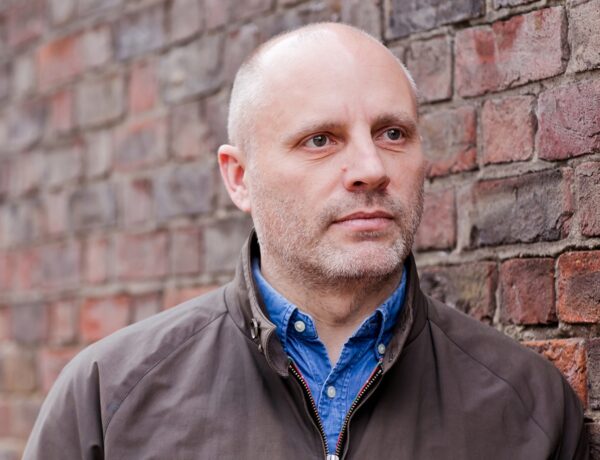Albert Samaha is an investigative journalist, Inequality Editor at BuzzFeed News, and author of two books.
His latest book, Concepcion: An Immigrant Family’s Fortunes, was a finalist for the 2022 National Book Critics Circle Award in Autobiography and received a Whiting Foundation Creative Nonfiction Grant.
His first book, Never Ran, Never Will: Boyhood and Football in a Changing American Inner City, was winner of the New York Society Library’s 2019 Hornblower Award, a finalist for the 2019 PEN/ESPN Literary Sports Writing Award, and adapted into the Netflix docuseries We Are: The Brooklyn Saints.
Each week, we publish a new daily writing routine from a famous author. Subscribe to our newsletter so you don’t miss out!
Hi Albert, great to have you on Famous Writing Routines. We’re really excited to talk to you about your writing routine and process. For those who may not know, can you please tell us a little bit about yourself?
I’m a journalist at BuzzFeed News and author of two books, Concepcion: An Immigrant Family’s Fortunes and Never Ran, Never Will: Boyhood and Football in a Changing American Inner City. I started my career at local alt-weekly newspapers, then became a national reporter covering criminal justice, then an investigative reporter digging into international corporations. Lately, I’ve started doing more essays, about my family, our roots in the Philippines, and our experience navigating America. I live in Brooklyn but am originally from the Bay Area.
Can you take us behind the creative process for your latest book, Concepcion?
For me, breakthroughs don’t usually come in sudden light-bulb moments but take shape incrementally as I chip away at the vague idea I started with, like chiseling a statue out of stone. When I’m working on a big project, it never really leaves my mind. I like to think about it as I drift to sleep, when I shower, while I watch TV, basically just as I go about my day, hoping the variety of backdrops helps me spot patterns or angles I hadn’t considered. I like to think the project absorbs whatever I’m experiencing while I’m working on it.
For Concepcion, I put together a reading list that included some books for background knowledge and some for stylistic inspiration. I jot down even the most trivial or peripheral thoughts into a notebook I carry everywhere, and then every evening I consolidate everything I learn and wonder into a Google doc. From day one, I keep a running thesis and outline, revising them as my research, reporting, and brainstorming accumulates. I probably went through 100 versions of the narrative structure over the five years I worked on Concepcion.
Once I was deep in the writing process, I plotted out chapters with index cards arranged across my living room floor. Rather than try to complete the bulk of research before I started writing, I reported and wrote section by section, chapter by chapter, to keep the material fresh in my mind as it hit the page.
How did you find it balancing writing your book with your work at Buzzfeed?
Finding that balance was tough because it basically meant working two jobs, but once I got into the rhythm, the double duty was creatively enriching. A book is such a long, all-consuming process that it becomes easy to block everything else out.
Having to interact with the world everyday as a journalist kept me bouncing against ideas and sources that I wouldn’t have encountered in my book research and helped me see themes and patterns I might have missed. Yet while I can go on about the benefits of balancing book work with daily reporting, I actually didn’t plan on taking that path for this book.
After I wrote my first book without taking any leave from my day job, I told myself I’d never put myself through that strain again. So I planned to go on like a six month book leave for this second one. I planned it for the second half of 2020. But when the pandemic hit, I couldn’t feel right stepping away at such an urgent moment, so I decided to just work double days like I had for my first book.
I was putting in 14 to 16 hours a day during the busiest stretches, all in hopes of meeting my November deadline. I guess it helped that I was stuck at home like most people, and didn’t have the usual social distractions on nights and weekends. But a big reason I was able to push through those long days was that I felt really excited about all the work I was doing — in those terrifying and weird weeks and months, there was nothing I would rather have been doing than reporting in the day and writing at night.
It was cathartic, and it brought me a sense of normalcy that I really clung to. I filed the manuscript the night before the election. I didn’t want a book deadline looming over me in case our country descended deeper into chaos.

What does a typical writing day look like for you?
There was a time I used to be a morning writer. I wrote most of my first book between the hours of 5am and 11 am, before heading off to my newsroom job. But by the time I started on my second book, I was doing almost all of my writing after dark, often grinding til sunrise.
I think that habit cemented in me from years of filing late night dispatches in the field for breaking news events: you’d spend the day reporting, sketch out the story over dinner, then file a draft before midnight, aiming to publish before daybreak. The rhythm felt natural.
These days, I wake around 8, do a light stretch, then warm myself up with an hour and a half of book reading. Then I’ll dive into the news for another hour and a half over breakfast — an editor long ago instilled in me the virtue of being “read in” at the start of each day. I’ll do a few hours of reporting in the early afternoon, mostly phone calls, emails, document digging.
Then in the late afternoon, maybe around 3p or 4p, I’ll clear everything else off the slate and get to writing. If it’s nice out, I like to set up shop at a bar or cafe. On chill days, I’ll go for three to four hours, maybe play some pick-up basketball in the evening to clear my head, then grab dinner at a restaurant somewhere. Other days, though, the momentum carries me through midnight, and I’ll keep pushing till I run out of steam. There are few feelings more satisfying than watching the sun rise after a productive night.
Do you have a target word count that you like to hit each day?
Not really. I feel satisfied if I get above 800. I’ll dance from joy if I hit 1,500. But some days the sentences come harder and it’s a tense slog just to reach 300 or 400. Those are often the sessions I’m most proud of. Six, seven hours of writing is nothing when you’re flowing. The true test is pushing through three, four hours when you feel like the well is dry. Squeezing out even a few drops on those days makes you feel like you won a nasty fight.
Can you talk about some of your must-have writing tools?
My notebook is my most essential tool. It doubles as my calendar. I fill up four or five a year. That shit is rarely beyond an arm’s reach at any given time, and I keep two pens slipped inside. Like probably every journalist, I have an eternal fear of losing my notes, so I try to type them up every night, into the all-encompassing Google doc I mentioned earlier.
I have a Spotify playlist of music I like to write to, mostly Jazz with a bit of Classical — I’ve slowly added to it for nearly a decade and it’s now like 26 hours long. Sometimes, when I’m struggling to gather creative momentum, I’ll grab a legal pad and write long hand. But usually when I’m writing, it’s on my iPad. It has an attachable keyboard, and it’s much smaller and lighter than my laptop, so it’s easier to carry around, which is important because I tend to be out traveling almost as much as I’m at home. I wrote large chunks of both my books on the road. I think I might be more productive on trips than at home.
Whenever you hit a roadblock during a writing session, what are some of the methods you use to get back into the flow of things?
I try to liven up the vibe if I’m hitting a wall. I’ll switch to longhand. Or change venues. Or playlists. All just to amp up the mental stimulation. I have a handful of passages from favorite writers I turn to for inspiration — Baldwin, Didion, Chimamanda, Orwell, Min Jin Lee, many others. Sometimes, if I’m at home, I’ll just lie on the couch, close my eyes, and explore whatever storytelling problem I’ve encountered until I’ve figured it out or fallen asleep.
What does your writing workspace look like?
At home, my desk is next to my window because I like to look outside when I’m thinking about what to write. Above my desk hang two photos of my grand-uncle Tomas, who was an artist, standing beside his paintings and sculptures. He was really influential on my creative life, a role model and mentor who first schooled me on our family’s pre-colonial history.
On my desk, I’ve got my notebook, my laptop, my iPad, a souvenir mug filled with pens, and a stack of books full of dog-eared pages and research notes. I also have a small chess set on the back corner of my desk. I started getting into chess during the pandemic, and whenever I’d hit a wall or need a break, I’d mess around with a quick game against myself. But otherwise, I try to keep my work needs simple. I write away from home almost as much as I write at home, so I’ve gotten comfortable with just an iPad and a notebook on just about any flat surface.

Before you go…
Each week, we spend hours upon hours researching and writing about famous authors and their daily writing routines. It’s a lot of work, but we do it out of our love for books and learning about these authors’ creative process, and we certainly don’t expect anything in return. However, if you’re enjoying these profiles each week, and would like to send something our way, feel free to buy us a coffee!



No Comments